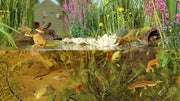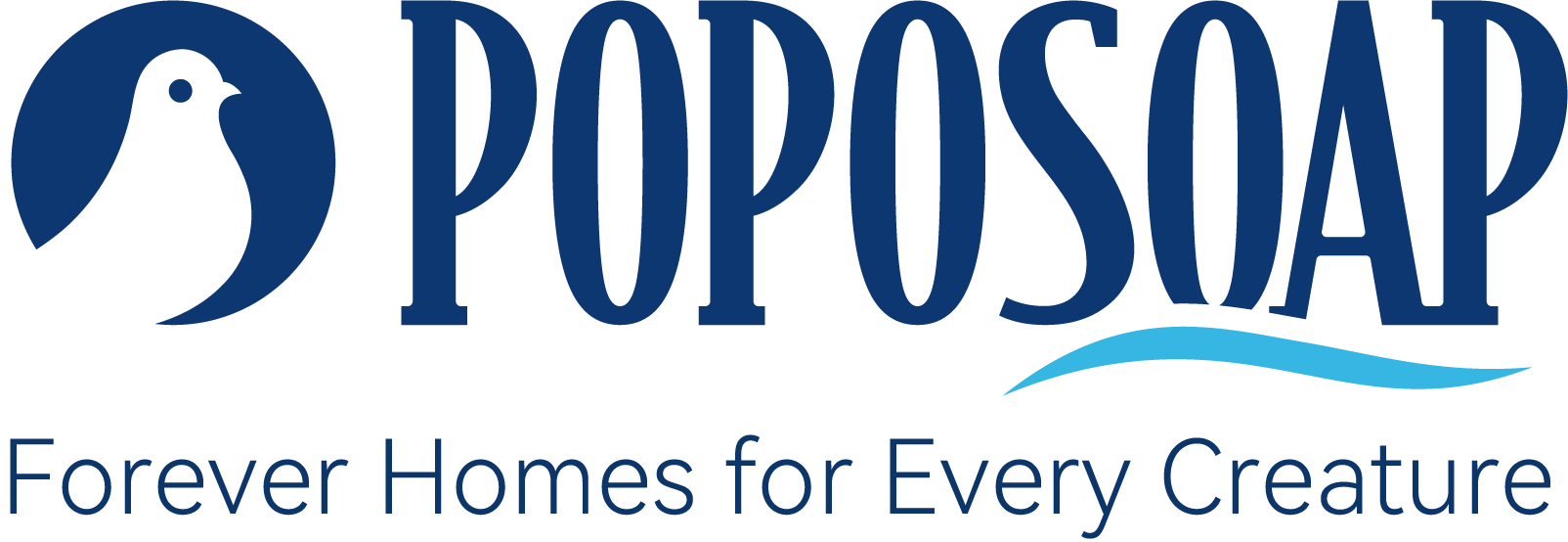
Ever stood and watched the intricate dance of life unfold in a backyard pond? From colorful fish darting through the water to lush greenery that blows softly in the breeze, ponds are complexly busy ecosystems in which literally hundreds of organisms coexist seemingly harmoniously. But are you out there wondering, "How do the organisms within the pond work in mutualism?" These mutualistic relationships deepen not only your appreciation for nature but also empower you to create a healthier, balanced aquatic environment. We'll explore fascinating examples of mutualism occurring in ponds, discussing their importance, as well as giving some tips on ways to facilitate these beneficial interactions. Whether you’re a seasoned pond enthusiast or just starting out, discovering how organisms collaborate can transform your aquatic sanctuary into a thriving ecosystem.
Understanding Mutualism in Ponds
Mutualism is a type of symbiotic relationship where two different species interact in ways that provide mutual benefits. Unlike parasitism, where one organism benefits at the expense of another, or commensalism, where one benefits without affecting the other, mutualism strengthens both partners involved.
In the pond ecosystem, mutualism is very essential since it allows for a balance, increases biodiversity, and normally ensures health within the pond. Interactions with plants and fish, microorganisms, and other forms of aquatic life can be engaged to offer a healthy habitat.
Key Features of Mutualism
1.Mutual Benefits: There exists a give-and-take relationship where both organisms receive something of value.
2.Interdependence: The life and well-being of one species may be highly dependent on the other species.
3. Various relationships such as between plants and animals, microorganisms, and larger life forms, or even between species of animals
Knowing these interplay dynamics thus helps the keeper in creating environment conditions that assist in these relations and hence leading to a stable and active ecosystem.
Examples of Mutualism in Ponds
1. Fish and Aquatic Plants

One of the most mutual relationships that exist within a pond includes fish and the plants living in the water. Fish-aquatic life such as koi or goldfish-provide, through their waste, the necessary nutrients for plant growth. In turn, these plants provide oxygen via photosynthesis, which helps improve water quality and provides shelter for the fish.
· Benefits to Fish: Cleaner water with higher oxygen levels enhances fish health and longevity.
· Benefits to Plants: Nutrients from fish waste promote healthy plant growth, which in turn can prevent algae overgrowth by competing for the same nutrients.
2. Algae-Eating Fish and Algae

Some fish, such as Siamese algae eaters or plecos, form mutualism with algae in the pond. These fish eat algae to control its growth and prevent the water from becoming too green and cloudy. The algae become a food source for these algae-eating fish in return.
· Benefits to Fish: A constant food supply maintains them.
· Benefits to Algae: Regulated growth maintains an ecological balance to prevent algae from overgrowing and asphyxiating the other aquatic species.
3. Snails and Bacteria

Aquatic snails often harbor beneficial bacteria in their shells. These bacteria assist in the process of breaking down organic waste material, such as dead plant materials and fish wastes, into nontoxic byproducts.
· Snail Benefits: The bacteria help in keeping the snail's shell clean and reducing waste products that could be harmful around them.
· Bacteria Benefits: The surface of the snail's shell provides a very good habitat for the bacteria to live and multiply.
4. Dragonflies and Mosquitoes

Dragonfly larvae, residing in the pond's water, feed on mosquito larvae. Such a relationship would help in maintaining the population of mosquitoes and at the same time provide adequate food to the larvae of dragonflies.
· Advantage to Dragonflies: Plenty of food keeps them healthy and growing.
· Advantage to Mosquitoes: Though this sounds rather counterintuitive, the presence of dragonflies keeps the ecosystem in a normal balance such that no one species overtakes the rest.
5. Frogs and Insects

Frogs create another mutualism in that they feed on insects, some of which could become plant pests. Frogs rely on the pond's aquatic plants and insects to survive.
· Benefits to Frogs: A reliable food source and a safe habitat increase their survival rates.
· Benefits to Insects and Plants: Predation by frogs keeps insect populations in check to prevent them from overconsuming plants.
Importance of Mutualism in the Health of Ponds
Mutualistic relationships form the backbone of a healthy pond ecosystem. They contribute to:
· Nutrient Cycling: Mutualism ensures nutrients are well recycled within the pond for plant growth and maintenance of water quality.
· Biodiversity: Higher biodiversity through mutualistic relationships increases the number of species, which helps the ecosystem be resilient against diseases and environmental changes.
· Ecological Balance: These relationships ensure population control of different organisms so that any one particular species doesn't take over to the detriment of an ecosystem.
By fostering mutualistic relations, the owners can create a self-perpetuating environment where each organism will play its role in the survival and aesthetic quality of the pond.
How to Foster Mutualistic Relationships in Your Pond
It does take some planning and ongoing upkeep to create and maintain mutualistic relationships in your pond. Here are some practical steps you can take to encourage these helpful interactions:
1. Stock Appropriately
Stock the right amount of fish, plants, and other aquatic life. Too much stocking will result in an imbalance in the mutualistic relationship due to overload on waste or competition for resources.
2. Incorporate Native Plants
Native aquatics are adapted to your local environment and will have mutualistic relationships with other organisms in the pond. They provide oxygen, shade, and habitat for these mutualistic organisms.
3. Maintain Water Quality
Test and maintain water parameters such as pH, ammonia, nitrite, nitrate, and dissolved oxygen on a routine basis. Clean and well-oxygenated water promotes healthy mutualistic interactions and prevents harmful imbalances.
4. Provide Habitat Structures
Adding rocks, logs, and other features provides them with places to hide and reproduce, thus offering mutualistic relations. These will also provide locations for beneficial bacteria and microorganisms.
5. Stock Beneficial Species
Add species that have a natural symbiotic relationship, like algae-eating fish, snails, and dragonflies. These life forms will maintain the balance in the pond ecosystem and support life in the same.
6. Do Not Overfeed
This overfeeding of the fish will eventually lead to much waste and degradation of water quality which could break mutualistic relationships. Feed fish only as much as they can eat in a few minutes and adjust feeding schedules with seasonal changes in metabolism.
7. Use Eco-Friendly Products
Choose appropriate pond care products that nurture positive bacteria and don't disrupt the natural chemistry of the water. Harsh chemicals will disrupt this delicate balance necessary for mutualistic relationships.
POPOSOAP Products to Enhance Pond Ecosystem

Maintaining a proper pond ecosystem requires having the right tools and products to do so. POPOSOAP has therefore developed a line of eco-friendly solutions designed to foster mutualistic relations and overall pond health in general. These include:
Incorporating POPOSOAP into your pond care routine can easily foster an ecosystem that will serve as a natural balance for mutualistic relationships to thrive, ensuring a healthy-looking pond throughout the year.
Appreciate Mutualism for a Healthy Pond
These are, however, some unsung heroes in most ponds that work from behind the curtains, keeping all ecological processes going: maintaining equilibriums, supporting diverse biodiversity, and upgrading water qualities. Mutual relationships, involving symbiotic fish with plants, snails, bacteria, or everything, see that no organism can shirk playing its due part.
Understanding and encouraging these mutualistic interactions can make your pond a living haven that is as beautiful as it is teeming with life. Establish a thoughtful stocking strategy, keep good water quality, add habitat structures, and use environmentally friendly products like POPOSOAP to maintain these positive relationships.
Welcome the complex dance of mutualism in your pond and reap rewards from a balanced, thriving aquatic ecosystem. Whether you are an experienced pond owner or just beginning your journey in owning a pond, being in the know-how of how organisms work together in a pond mutualism will go a long way in your cultivation of a pond that stands as testimony to the incredible interconnectedness of nature.










